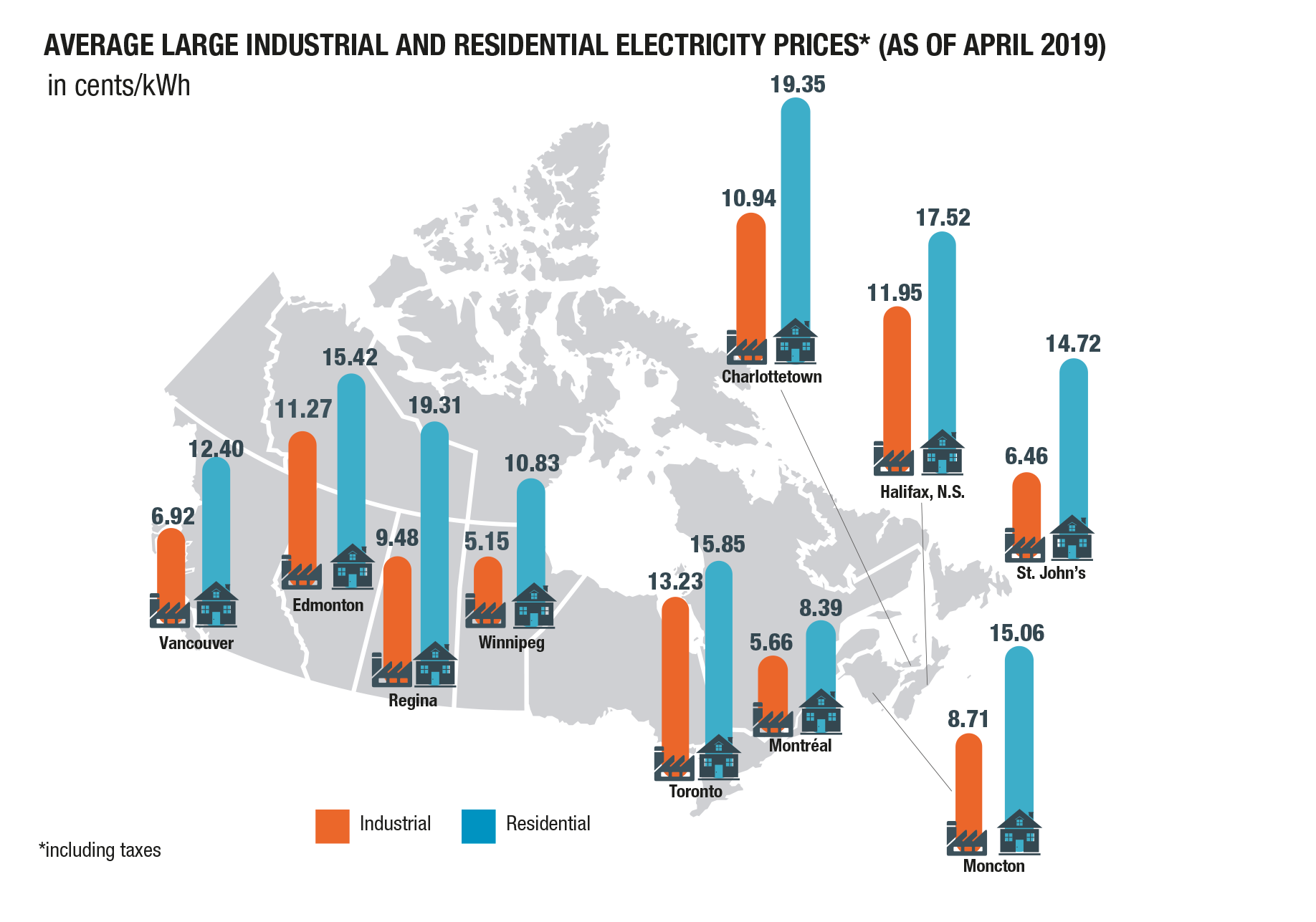
Canada is known as a resource-rich country with a unique mix of energy sources. While we have an abundance of oil and natural gas, these are not our country's only energy sources. Much of Canada's energy is also generated from hydroelectricity, coal, nuclear power and renewable energy sources. As such, on the world stage, Canada is the 4th largest producer of oil. However, Canada's energy resources are not split evenly across all provinces and territories, which means that the places where our energy sources are most abundant are not necessarily the same places with the most demand.
To diversify energy sources and be more self-sufficient regionally, all provinces and territories are working to increase their use of renewable energy (e.g. wind, solar, biomass and geothermal). These renewable energies are the logical way to expand low carbon-emitting energy. However, these advancements are not keeping up with the demand in the same steady way as hydro and fossil fuels. As such, Canada will see all forms of energy in the mix for the foreseeable future.
On a global scale, Canada is the fifth largest producer of natural gas in the world and the sixth largest producer of crude oil. The trouble is, while we are good at producing oil and natural gas, we only have one major customer, the United States. This means that Canada does not obtain world prices for our exports, as we compete for U.S. markets with other petroleum-producing nations. Canada is currently taking steps to bring our energy to other international customers, which enables a greater trade revenue for Canada. That way, we can increase our trade partners and become less reliant on the United States.
Most of the electricity produced and used in Canada originates from renewable sources, mainly hydro. In fact, 60% of the electricity produced in the country is hydro, and only 19% comes from fossil fuels.
In total, Canada generates 2% of the world's entire electricity for a total of 641Twh in 2018, ranking 6th below Japan and Russia.
Canada's electricity grid is connected to the grid in the United States. This allows for a trade relationship between the two countries to meet changing demands between both countries. As of 2019, Canada exported 60.4 TWh to the U.S. and imported 13.4TWh for a net trade surplus of close to 50TWh.
The production and use of electricity vary widely across provinces and territories. Some provinces still rely heavily on fossil fuel electricity sources, such as Alberta, Saskatchewan and Nunavut. While provinces as B.C., Ontario, and P.E.I. source the large majority of their power from renewable sources.
This variation in sources also has an impact on the price of electricity across various regions in Canada. A government graphic to the right illustrates this variation.



<aside> 📢 All the commitments and promises from Canada's federal political parties are sourced from their 2019 platforms:
</aside>